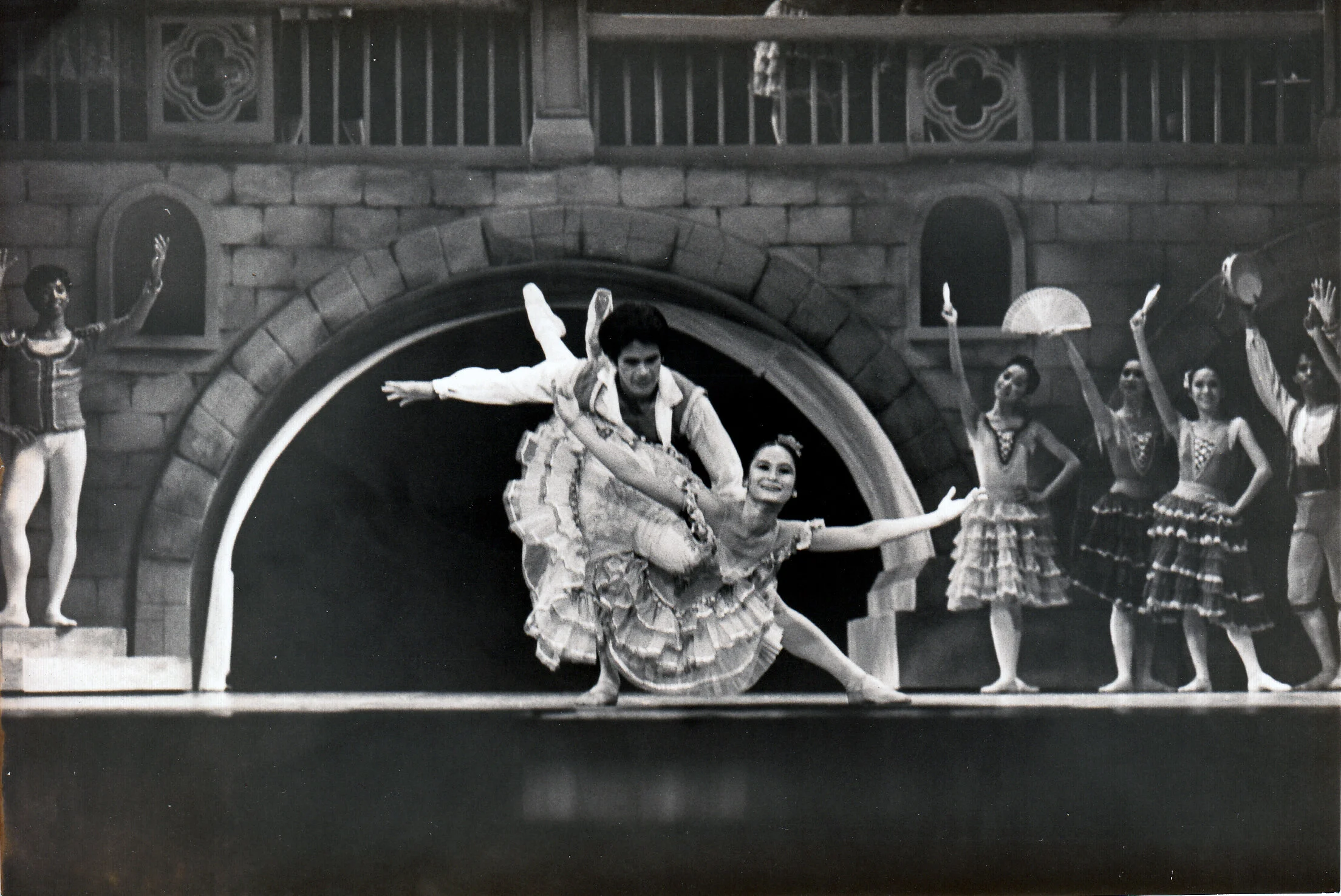Don Quixote: Titular character in the shadows
A noble man from La Mancha is the unlikely hero in renowned Spanish novelist Miguel de Cervantes’ masterpiece, The Ingenious Gentleman Don Quixote of La Mancha. Unlikely because he is not the picture of youthful grace and vigor often ascribed to lead characters. Instead, he is an elderly hidalgo (member of lesser Spanish nobility) who has read so many chivalric books that he has come to believe that he is living in them. Don Quixote’s delusions lead him to become a knight-errant. With him is Sancho Panza, a farmer that he has turned into his squire. Together, they embark on a journey to revive chivalry.
Russian dancer Viktor Savaliev (left) was Ballet Manila’s guest ballet master when he was cast as Don Quixote in 1999, paired opposite Aileen Gallinera as the Queen of the Dryads. Photo by Ocs Alvarez
The novel of two parts (published in 1605 and 1615) was an extensive narration of the pair’s adventures. But the ballet based on this book tossed away much of the text, focused on two chapters, and reduced the title character into a minor personality with no dancing part.
To be fair, most versions of the ballet today open with Don Quixote and Sancho Panza stumbling upon the town where Kitri and Basilio live. The two, the innkeeper’s daughter and the town barber, are the true leads of the ballet but Don Quixote’s presence sets the stage for the intense and entertaining choreography to unfold.
This massive distillation of the text was the fault of Franz Hilverding, the court choreographer of Vienna who premiered his Don Quixote in 1740. All ballet versions since then carried only the two chapters of the lengthy novel. But despite the apparent downgrade, Don Quixote remained an important figure in the ballet. While often ridiculed, his character is pivotal in pushing the story forward when dancing alone would not suffice.
Neil John Mag-aso takes his turn as Don Quixote in Ballet Manila’s 2017 production with Kenneth del Rosario as his trusty squire Sancho Panza. Photo by Ocs Alvarez
Among the earliest Don Quixotes were Wilhelm Vanner and Timofei Stukolkin – both from the legendary Marius Petipa’s versions for the Bolshoi Ballet (Ballet of the Imperial Bolshoi Theatre). Alexander Gorsky’s controversial Don Quixote featured Alexei Bulgakov in the title role. That version, which departed from Petipa’s extensively, earned the ire of the older choreographer who cried out: “Will someone tell that young man that I am not yet dead?!”
Rudolf Nureyev choreographed his own Don Quixote for the Australian Ballet. In the film version, acclaimed Australian dancer and choreographer Sir Robert Helpmann performed as Don Quixote.
Though relegated to a supporting role, Don Quixote (portrayed by Harold Salgado in 2009) opens the ballet that bears his name. Photo by Ocs Alvarez
Perhaps the most notable artist to play Don Quixote is American choreographer George Balanchine. He created a version in 1963 for the New York City Ballet and appeared in it himself as the title character.
At Ballet Manila, Russian dancer Viktor Savaliev was among the company’s earliest Don Quixotes. Harold Salgado and Neil John Mag-aso eventually succeeded him.
Don Quixote, the ballet character, may be a shadow of his novel counterpart but his importance in the story cannot be emphasized enough. He may no longer be the lead but his name continuing to be the title is a fitting tribute to one of the most recognized characters in world literature.






